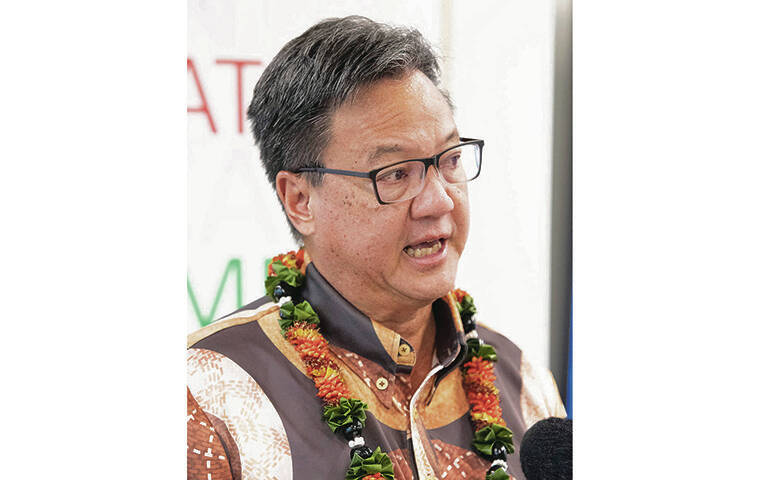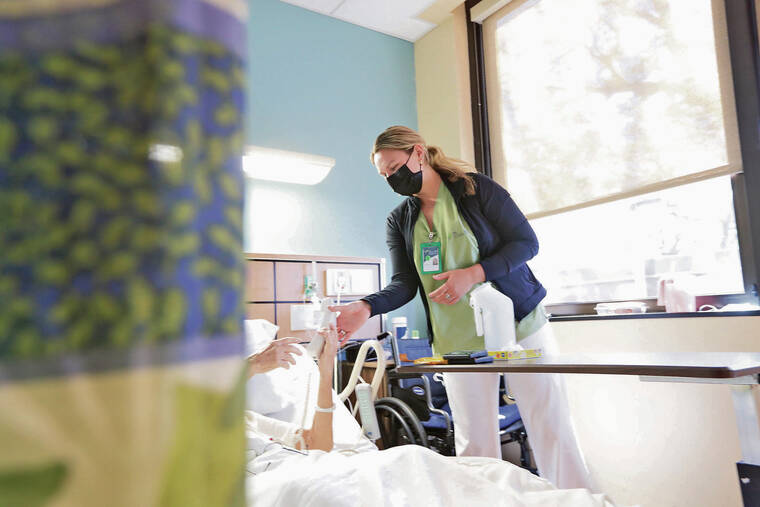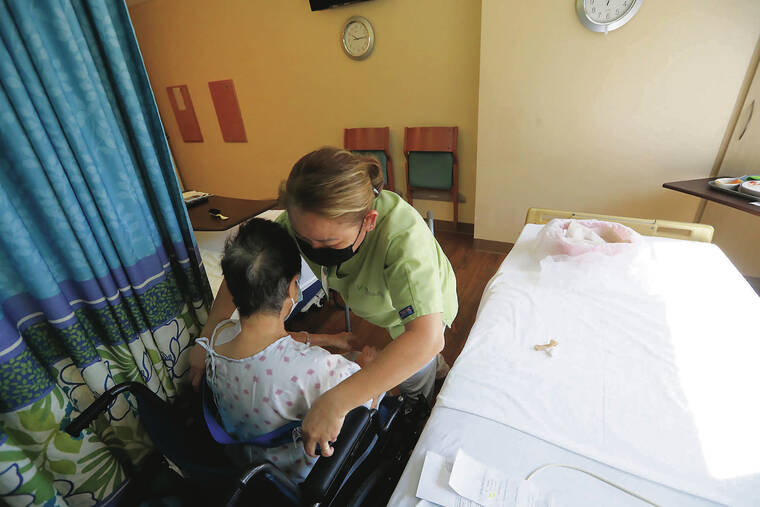More than 700 days, or more than two years.
That’s how long a patient at one of Oahu’s hospitals has been waiting to be admitted to a long-term care
facility. For others the wait can be weeks or months or at least a year, due to a variety of reasons including challenging placements.
This growing waitlist has been an ongoing problem, according to Hilton Raethel, president and CEO of the Healthcare Association of Hawaii, a trade group representing both hospitals and long-term care facilities, mostly due to staffing shortages.
For years, Hawaii’s long-term care facilities, which include nursing homes, have been dealing with staffing shortages, even before the COVID-19 pandemic. Today the situation has only gotten worse, with long-term care facilities operating in crisis mode.
On any given day there are about 200 patients in Hawaii hospitals ready to be discharged but unable to due to lack of availability at a long-term care facility.
Statewide there are about 4,400 skilled nursing facility beds.
The number recently shrank due to Wahiawa General Hospital’s closure of its 115-bed nursing and rehabilitation center. The hospital cited insufficient insurance reimbursements and financial challenges as the reasons for its closure.
Wesley Lo, CEO of Ohana Pacific Health, the largest operator of nursing homes across the state, said the inability to admit new patients is not due to lack of available beds, but primarily lack of available staff.
At The Villas, a post-acute care facility in Liliha, for instance, there are about 160 beds due to a recent wing expansion, but only about 90 are staffed and available.
The staffing shortage has persisted off and on for decades. At a recent low point, Lo said he saw one long-term facility with 240 empty shifts a week, resulting in a 58% jump in clinical overtime.
What nursing homes need most are certified nurse aides, which are the “lifeblood of long-term nursing facilities,” Lo said.
Facilities are short of nurse aides, as well as housekeepers and dietary aides who care for kupuna.
Nurse aides perform the bulk of the caregiving services at nursing homes but are paid at the entry-level position, which faces competition from retailers and restaurants such as Target or Chick-fil-A.
Hawaii has openings for more than 700 nurse aides and nurse
assistants, according to a recent HAH health care workforce initiative report.
Daniel Ross, president of the
Hawaii Nurses Association, says wages for certified nurse aides in the state range from as low as $14 to $15 per hour to $20 to $25 per hour.
McDonald’s pays more in some cases, he said, and nurse aides need better compensation for a job that’s more demanding than most.
“It’s a physical job, it’s a difficult job,” said Ross, a registered nurse who himself worked as a nurse aide while in school. “It’s very challenging on a physical and psychological level.”
Many nurse aides are either nursing students or immigrants who have financial challenges, he said, and they need living wages.
The union is advocating for certified nurse aides to get paid $20 an hour, at minimum, according to Ross, and is in negotiations with one Oahu facility paying theirs less than $15 an hour.
Also, retention is a problem because acute care hospitals pay more for nurses, so it is difficult for nursing homes to compete.
“We also know that if we don’t do it, who’s going to do it, so we have to do it for our community,” he said. “We’ve got to take care of them, so we’ve got to push forward.”
Lo said hospitals and long-term care facilities are now working together to solve the problem, understanding that what happens at one affects the other.
Recent relief has come from $2 million in funding from the state Health Department to bring traveling nurses — mostly licensed practical nurses and some registered nurses — to assist long-term care facilities on Maui and Hawaii island.
This has allowed Hale Makua on Maui and Ohana Pacific in Hilo to admit more patients.
HAH is working with the City and County of Honolulu to secure another $5 million to bring traveling nurses to Oahu nursing homes, where the need is greatest.
During the height of the pandemic, when hospital staffing shortages were exacerbated by a higher number of COVID-19 patients, acute care hospitals brought in hundreds of traveling health care workers from the mainland with the help of Federal Emergency Management Agency funds.
But nursing homes never got any of those FEMA funds, according to Raethel.
“We tried very hard,” he said, “but we weren’t able to make the logistics work.”
The traveling nurses recently brought to long-term care facilities now are providing much-needed relief, and that appears to be helping to open up beds at acute care hospitals.
Raethel said the hospital census last week dipped below 2,400 for the first time in a long time.
For months, hospitals have been at full capacity — with an average census above what it was at the peak of the pandemic, resulting in long waits for emergency rooms.
If the census were to drop by 50 to 100 patients a day, he said, the impact would be great.
But help from traveling nurses was a short-term fix, and longer-term fixes are needed. These traveling nurses will work a shift of
90 days at a time, then go home.
“The solutions to the workforce problem are not instantaneous,” Lo said. “They’re foundational and fundamental issues that have to be resolved.”
Long-term facilities are also financially challenged because Medicaid is the primary payer for nursing homes, but reimbursements do not cover all of the actual costs of care.
Raethel said hospitals
are in discussion with
Med-QUEST, Hawaii’s Medicaid managed care program, to “re-base” the rates for long-term care facilities, factoring in the higher costs of operations for food, medications and electricity now compared with three to four years ago.
He hopes these efforts, if successful, could result in new rates for 2024.
There are also numerous programs underway in the state to boost the local health care workforce.
There is, for instance, a pilot “glidepath” program offering certified nurse aides working at long-term facilities the opportunity to get paid while going to school three days a week at a community college.
This offers nurse aides pathways to career advancement, and they can earn while they learn and move up to licensed practical nurses with higher pay.
There are other programs working with a broad range of students — from public high schools to community colleges and universities
— to boost training and
recruitment.
“We have a lot of students going through CNA courses right now, and we have different cohorts,” Lo said. “We have some going through high school programs, some going through community colleges. We’ve got all those programs going on.”
Demand, however, has outpaced the state’s ability to train more nurses, and it will take time for these efforts to ease the shortage. At the same time, there is an exodus of burned-out health care workers who are retiring early or leaving the state.
“We’ve learned but it takes time,” Lo said. “There’s no magic wand.”








